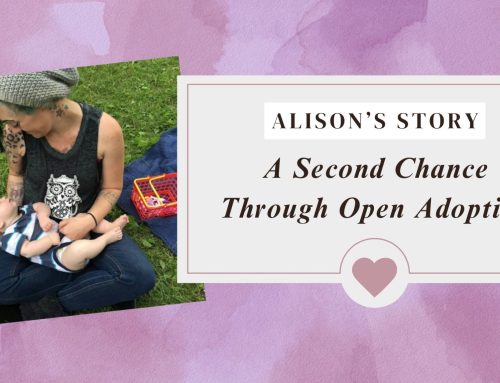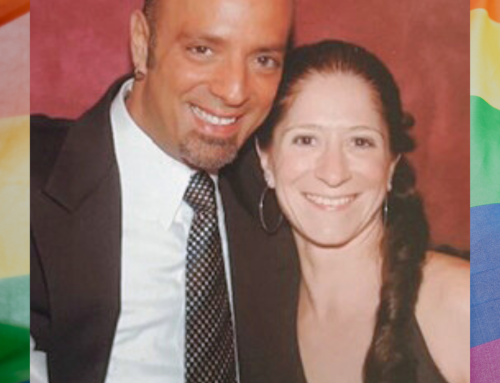On today’s Heart to Heart with Adoptions From The Heart podcast, we welcome Ashley Kodet. Ashley began her social work career in foster care and then moved into private domestic adoption for many years. Today she uses her background knowledge in her role as an Orphan’s Court Administrator in the Philadelphia area. This podcast focuses on the adoption-related court process and what it looks like after an adoption placement happens.
Adoption Court System During COVID
Like most businesses and operations, the Pennsylvania court system shut down in March due to COVID. A Judicial Emergency occurred which meant no hearing could be held for several months. At that time judges worked with administrative staff to figure out how to provide justice without meeting in person. Filings were still being received, but no hearings could occur, which backed up the system and left many people waiting and frustrated due to the delay. The delay was supposed to last only two weeks but kept expanding as conditions worsened country-wide.
Moving Virtual
Ashley and the court system explored the many platforms to move toward a virtual model but ultimately chose Zoom. Ashley admits there are some challenges with not being allowed to fully return to in-person. Outside of Orphans Court but within the same system, jury trials are still not allowed to occur. For jury trials, there need to be twelve jurors, several lawyers, plus internal staff, which is not possible with the COVID guidelines in place. On the other hand, the Orphan’s Court functions well enough virtual, so they may stay virtual longer than their counterparts in the court system.
For trials that involve more people, the process becomes more difficult. Ashley talks about a particular trial where there were over twenty people needed on the call. The trial lasted for 3 days. She mentions how difficult it can be to have such an overcrowded call and also not to be able to read people the same as in a courtroom setting.
Adoption Finalizations on Zoom
Many adoptive families look forward to the finalization hearing. It is viewed as a celebration, where the child is officially adopted into the family. In pre-COVID days, families would take family pictures in the court with the judge to commemorate the occasion. Today, these hearings are done virtually, and the calls are not allowed to be recorded or screenshotted whilst in session. Many judges are willing to stay on after the hearing to take a screenshot with the family; however, it doesn’t have the same effect as it would in person.
Ashely said in November of 2020, a family who finalized over Zoom was told there would be a day they could come to the courthouse and take photos with the judge. Unfortunately, due to safety regulations, that had to be postponed, but Ashley strongly believes when it is safer, families will be given that option again.
Jenna knows how important an in-person finalization hearing is to many families. She brings up a story about a family that went through a unique finalization process. A Connecticut judge made a special exception since the family went through so much and was so strong. The judge held an outdoor, socially distant finalization hearing and allowed pictures at the end.
Benefits of Moving Adoption Court Process Virtual
While there have been difficulties, there are benefits to working virtually as well. Scheduling is a lot faster and easier than before. Asking people to gather via Zoom is a lot easier than have people travel from all over to a courtroom. Having Zoom makes hearings more accessible to all parties involved. Specifically, in regards to adoption finalization hearings, extended family members and friends have been able to join via Zoom who wouldn’t have been able to experience the occasion if the courts were in-person. Even when COVID regulations ease up, Ashley believes finalization hearings might still allow the option for family members to attend via Zoom to allow more people to experience that special moment.
Adoption Court Process
The adoption process does not end with a placement. Ashley explains step-by-step the post-placement adoption process. As she works in Pennsylvania, she speaks from that state’s court perspective. Each state has its own rules and regulations concerning the adoption process.
Voluntarily Terminating Parental Rights
For a private adoption, the first step is for the adoptive parents to file an intent to adopt form along with a home study. Next, the birth parent’s rights need to be terminated, which can happen a couple of different ways. The first way would be both birth parents voluntarily consent to terminate their rights. This is done in a hearing to confirm verbal consent and that the birth mother waited 72 hours after the baby’s birth to sign the papers. Next, 30 days after the termination of parental rights was signed, if it has gone unrevoked, then the adoptive parents can move on to the next step.
Involuntarily Terminating Parental Rights
If there is a parent who doesn’t consent to termination, then additional steps need to be followed and the process is significantly lengthened. This can be done by alternatively relinquish or involuntarily terminating a parent’s rights. When a parent doesn’t voluntarily consent to terminate their rights, the adoptive parents wait for at least 4 months. Once the petition to terminate is filed, it goes to Ashley or someone in the local court system in a similar role.
She first reviews the home study and clearances to make sure everything is up to date. Then she reviews the petitions and schedules a date for the hearing. Birth parents need to be alerted of the hearing, if possible. Evidence of notifying birth parents of the hearing needs to be submitted. By the time all these steps are taken, if a birth parent doesn’t consent and the birth father is unknown, the hearing could take place anywhere from 6-8 months after the child’s birth.
Once the termination moves forward, a birth parent has 30 days to appeal. If they do appeal, it goes to the Higher Court which decides if there should be a new hearing or not. The timeline for appeals extended to about 6 months because of COVID.
Post Placement Reports
Depending on the timeline, adoptive families need to keep an eye on their dates because their home studies can expire by the time it’s time to file. Sometimes a home study update is necessary and an additional post-placement visit depending on how long it takes to be scheduled for a court hearing. The goal of post-placement visits is to confirm the environment is a safe place to raise a child. The agency has to consent to the adoption. Agencies must follow state laws and state licensing rules and regulations and the agency’s own policies. Every step in the adoption process is to protect the child.
Finalization
Ashley says finalization is a celebratory event. All the hard work is done. Some questions are asked throughout the hearing, but the most strenuous parts of the adoption process are typically over. This is the final step to making sure the family understands that the adoption is permanent. And, they will officially commit to providing for and loving the child. Finalization day is a great day for adoptive families, who officially have a new family member, and the judges who love creating new families.
To listen to other season 2 podcast episodes, click here.




